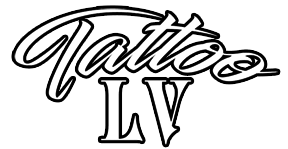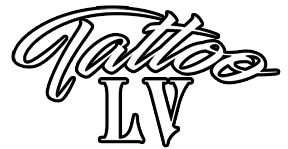Tattoo Removal Options
For many years, people who added tattoos to their body had little recourse, much less a natural removal method<, for removing these works of art. Removal techniques could be painful and invasive (requiring surgery). But there have been a lot of changes in the field of tattoo removal. A recent book – reviewed here- Tattoo Removal Methods and Procedures covers multiple removal options.
You are NOT Alone!
Almost 50% of people with tattoos come to regret having the tattoo and almost 20% of people who have tattoos eventually get them removed.
Look BEFORE you Leap!
In this book, “Tattoo Removal Methods and Procedures”, Allen Pollick, an experienced removal specialist, explains in detail a number of methods and procedures, including natural removal,
Frequently Asked Questions – Answered!
* How much will it cost?
* Is there pain involved?
* Will it completely remove the tattoo?
* Will there be a scar?
* Are there health risks?
* What are the chances for infection?
* Will my insurance pay for the procedure?
* Can I remove the tattoo myself – safely?
* Where can I find and purchase all the necessary ingredients to remove my tattoo?
EXPLAINED: 15 TATTOO REMOVAL METHODS (Surgical and Non-surgical)
SURGICAL Removal Methods
* Laser Removal
* cryosurgery removal
* dermabrasion removal
* Salabrasion removal
* Excision removal
* Plastic Surgery removal
* Tissue Expansion removal
* I.P.L.T. (Intense Pulsed Light Tattoo removal)
Non-SURGICAL DIY or Home Removal
* TCA removal
* Glycolic Acid removal
* Hydroquinone Removal
* I.R.C. (Infrared Coagulation Tattoo removal)
* Chemical Extraction Removal
* Tattoo Fading Creams Removal
* Tattoo Cover-Ups
What Everyone Thinks They Know…
*Laser*
Laser removal works by producing intense laser pulses that pass harmlessly through the dermis (top layers of the skin) to be absorbed by the targeted tattoo ink. This laser energy causes the tattoo ink to break up into smaller particles that are then absorbed by the body. Medical researchers have determined which wavelengths of light are best for which colors and how to deliver the laser’s output to most effectively remove tattoo ink.
Expect to pay $100 to $200 (USD) per laser session. You could endure some (possibly heavy) pain, and the smell of your own burning skin. A large tattoo, such as a half-sleeve or full-back, may take up to 2 years to remove, going every 5-8 weeks.
Some clinics may offer very low-rates to no-charge for removing gang-associated tattoos.
*Tattoo Removal Creams – Topical Skin Creams*
There is an option of using a topical gel or cream to remove a tattoo. Many people try this method because it is the least expensive and they think the safest and least painful option to remove a tattoo.
However, it should be noted that some topical tattoo removers do use ingredients such as Trichloroacetic Acid (TCA) which is a very strong skin peeling chemical. Risks associated with 12% – 25% TCA may be less than those encountered by laser removal. There is a small risk of scarring using these concentrations as long as instructions are followed meticulously!
*Hydroquinone*
Hydroquinone may also be effective in removing a tattoo. A common procedure is to use an apricot scrub as a skin defoliant and then rub hydroquinone (2%) over the tattoo. Cover the area with plastic wrap and then wrap in an Ace bandage. Black ink tattoos react to this procedure better than some colors such as red.
Hydroquinone is available, by prescription in strengths up to 7%. Generally, but not all, dermatologists are reticent to prescribe this strength for tattoo removal – preferring the (more expensive) laser removal.
Hydroquinone is used as a topical application for skin lightening to reduce the color of skin as it has a lower predisposition to cause dermatitis. There is inadequate evidence in humans for the carcinogenicity of hydroquinone.
FIRST, Get the Facts!
The old saying, “look before you leap” especially applies to people that wish to undo, what we have done. Learn more about Tattoo Removal Methods and Procedures where Allen Pollick, Tattoo Removal Specialist, explains in detail fifteen different methods and procedures, including natural removal.
The old saying, “look before you leap” especially applies to people that wish to undo, what we have done. Learn more about “Tattoo Removal Methods and Procedures.” Allen Pollick, Tattoo Removal Specialist, explains in detail fifteen different methods and procedures, including natural tattoo removal, for getting rid of tattoos that no longer hold the appeal and charm they once did.


